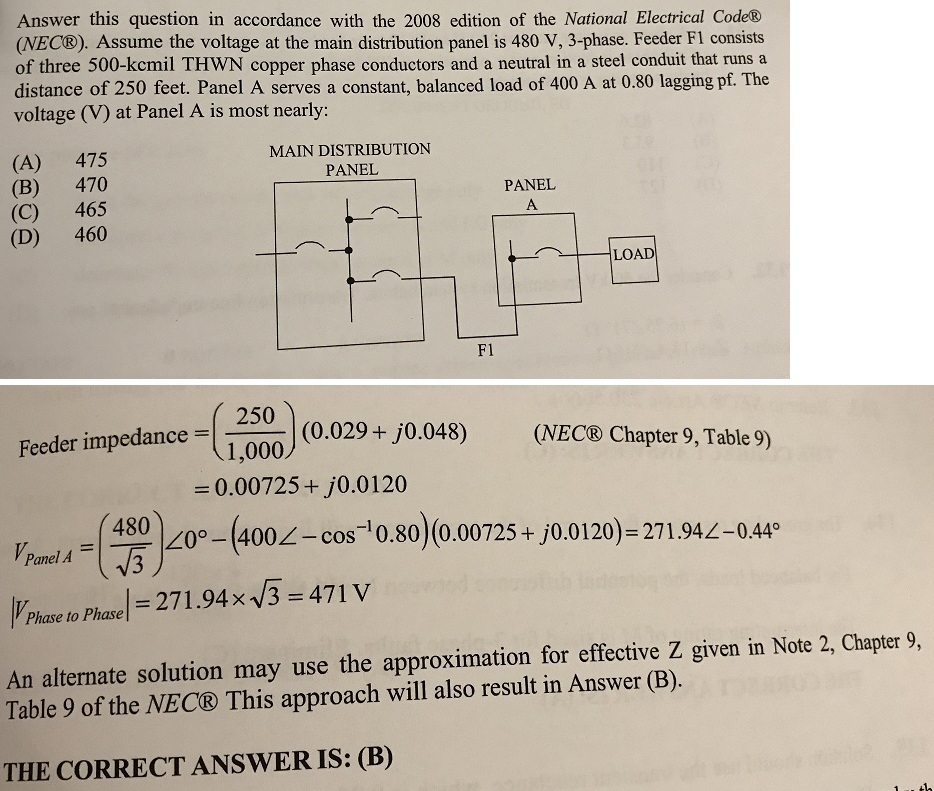applepieordie
Active member
- Joined
- Feb 21, 2017
- Messages
- 28
- Reaction score
- 0
I often find myself making the mistake of using Vpp rather than Vpn and vice versa. After I see the solution and realized the mistake I made, it seems so obvious from the start that I should have used Vpn.
Question 1: are there any techniques or rules to follow to be sure what voltage potential to use and minimize mistakes? or is it just trial and error learning process? I dont want to make such a simple mistake on exam day.
Question 2: When converting from Vpp to Vpn I usually follow the formula Vpn = Vpp/(sqrt(3)∠30°). In the example below, the ∠30° is left out of the denominator. Can someone explain to me why? When to include ∠30° and when to exclude?

Thanks!
Question 1: are there any techniques or rules to follow to be sure what voltage potential to use and minimize mistakes? or is it just trial and error learning process? I dont want to make such a simple mistake on exam day.
Question 2: When converting from Vpp to Vpn I usually follow the formula Vpn = Vpp/(sqrt(3)∠30°). In the example below, the ∠30° is left out of the denominator. Can someone explain to me why? When to include ∠30° and when to exclude?

Thanks!





















